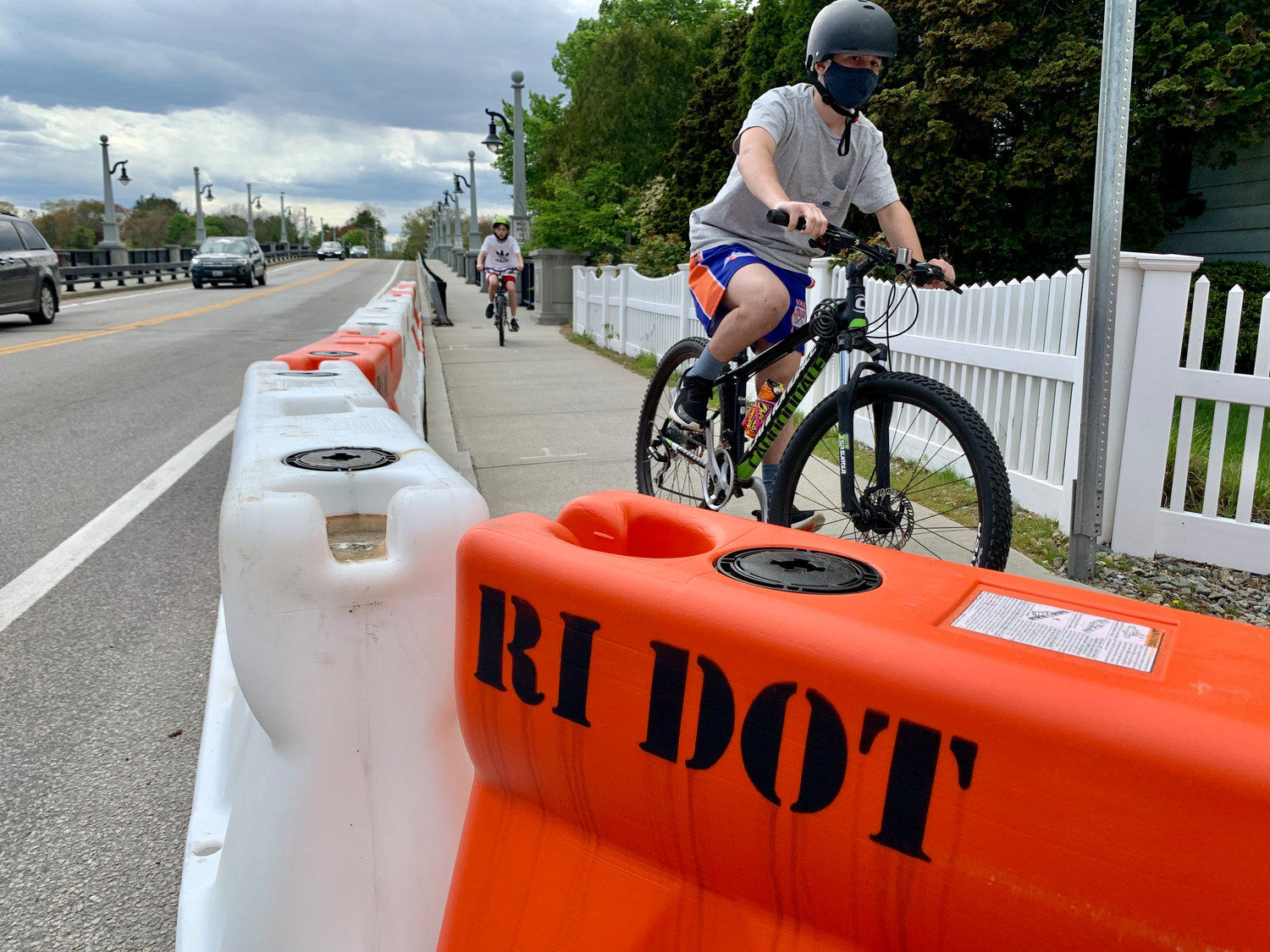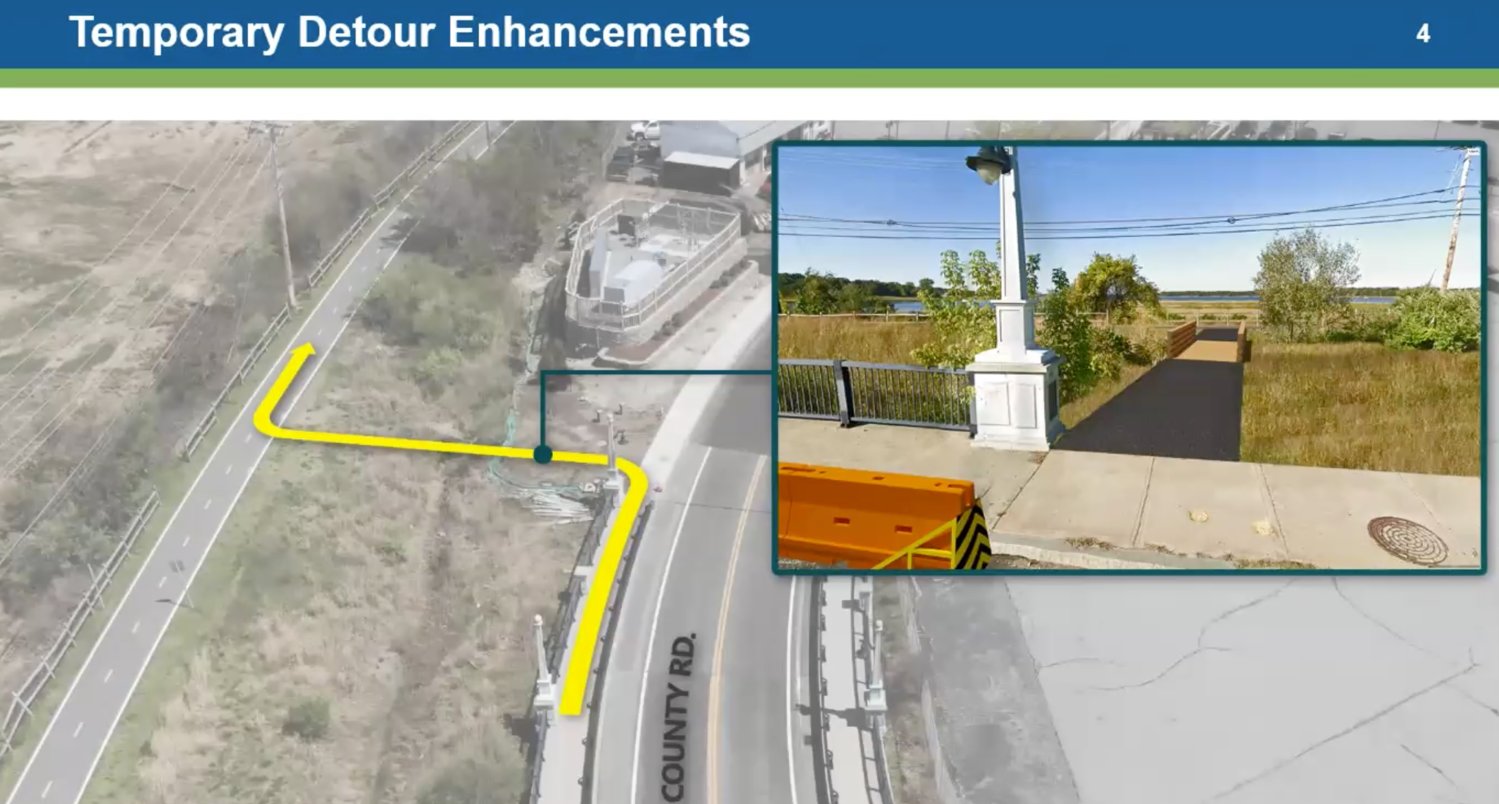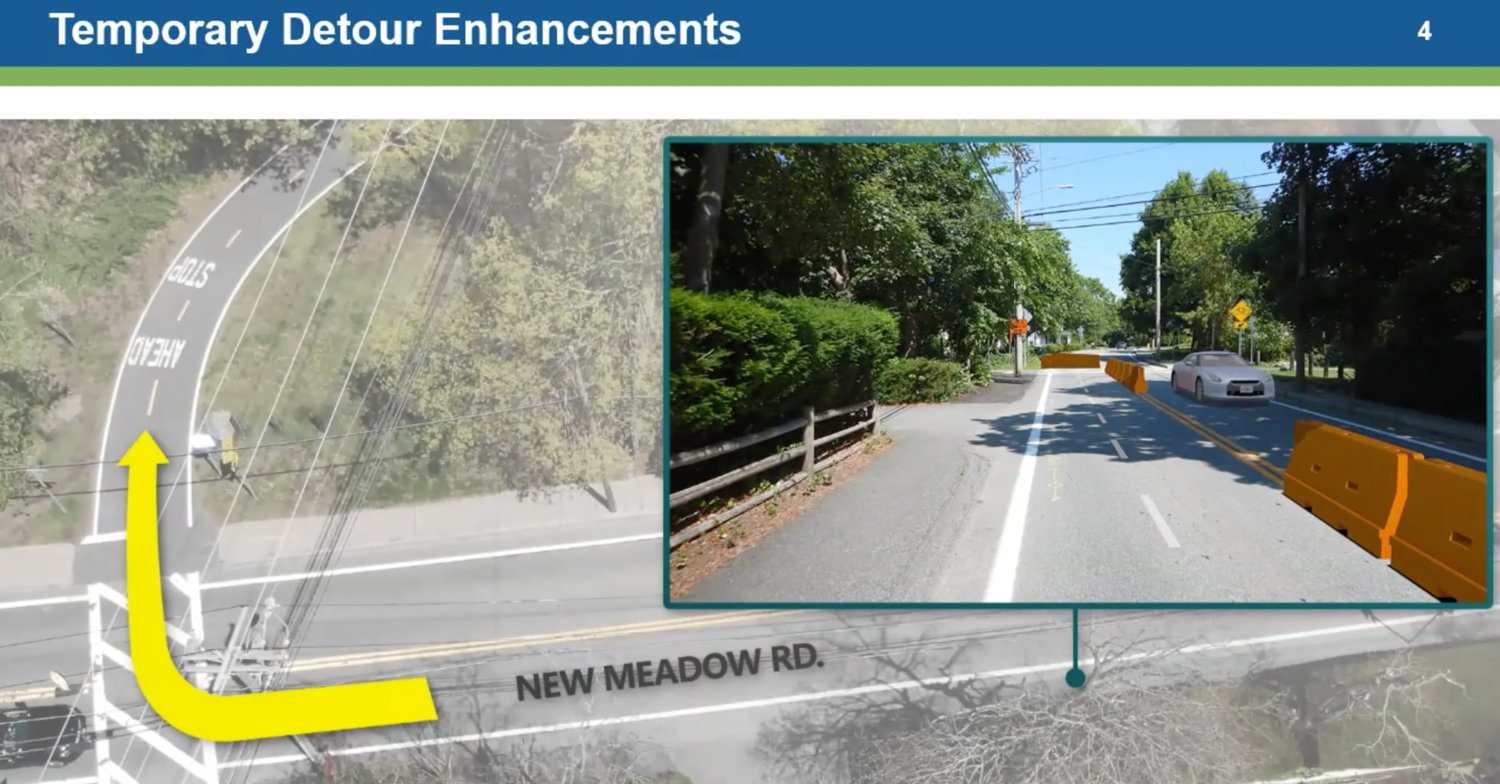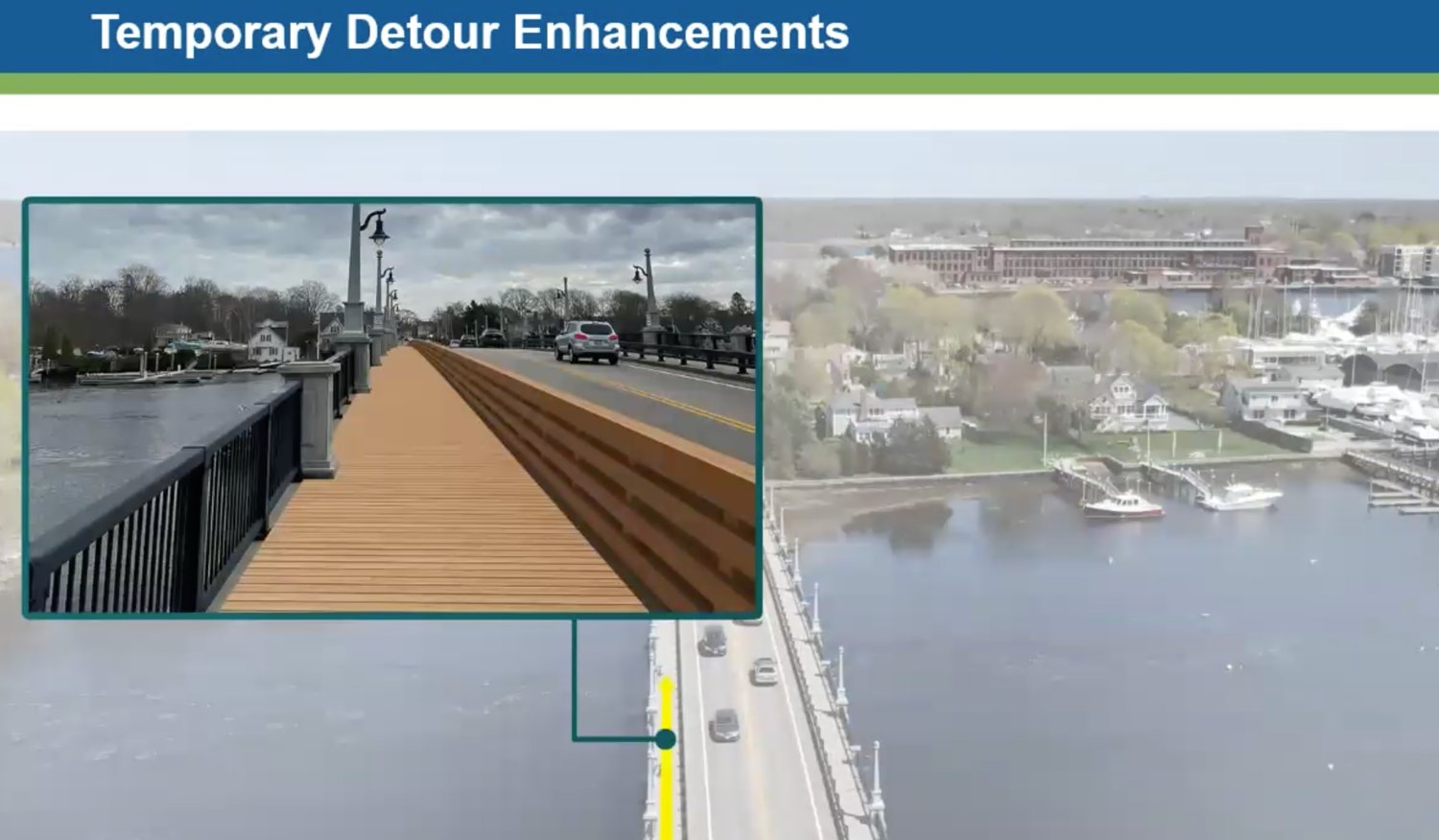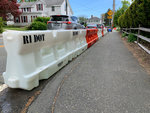Public pleads for new bike path bridges
DOT offers new detour, but refuses to promise new bridges
The DOT is offering an improved detour, but stopped short of promising new bike path bridges.
During a special public forum earlier this month, a high-ranking Rhode Island Department of …
This item is available in full to subscribers.
Please log in to continue |
Register to post eventsIf you'd like to post an event to our calendar, you can create a free account by clicking here. Note that free accounts do not have access to our subscriber-only content. |
Day pass subscribers
Are you a day pass subscriber who needs to log in? Click here to continue.
Public pleads for new bike path bridges
DOT offers new detour, but refuses to promise new bridges
The DOT is offering an improved detour, but stopped short of promising new bike path bridges.
During a special public forum earlier this month, a high-ranking Rhode Island Department of Transportation official said the state aims to build eight-foot-wide wooden boardwalks along the Warren and Barrington river bridges and install protective barriers between the motorists and pedestrians in an effort to improve the safety of the detours around the closed bike path bridges.
However, when RI DOT Engineer Bob Rocchio was asked to assure everyone that the state would definitely be rebuilding the bike path bridges in the future, he refused to do so.
Instead, it appeared that the state may explore turning the temporary improvements into more permanent features.
On numerous occasions during the forum, Mr. Rocchio said the state had not decided what it would offer as a permanent solution to the East Bay Bike Path bridges, which have been closed since 2019. About half-way through the forum Barrington Town Council Vice President Rob Humm asked if Mr. Rocchio could assure people that the DOT would dispel the concept of using the detour enhancements as a permanent fix.
Mr. Rocchio’s response: “I cannot.”
Detour changes
Mr. Rocchio opened the forum with a presentation about the planned changes for the bike path bridge detour.
He said the state was focused on making the detour safer as quickly as possible. The current detour asks bicyclists to walk their bikes over the Barrington and Warren river vehicle bridges, sharing the narrow sidewalk space with walkers, joggers and fishermen.
Mr. Rocchio said some bicyclists have not been following the instructions and instead have tried to ride on the sidewalks, occasionally creating dangerous situations. He said other bicyclists have opted to ride on the edge of the vehicle traffic lanes on the bridges.
“Now bikers will be able to ride the complete detour,” he said.
The new detour follows a similar route to the existing one — diverting bicycle and pedestrian traffic off the bike path at Police Cove Park, and onto the vehicle bridges.
Mr. Rocchio said a barrier would be installed along County Road, between the westbound vehicle lane and the sidewalk. Meanwhile, the sidewalk on the north side of the bridge would be expanded to eight feet in width, and a wooden boardwalk would be installed. Mr. Rocchio said the boardwalk would be fabricated off-site then brought in and installed. A wooden barrier and a car guardrail would separate the bike path boardwalk from the vehicle travel lane.
“The travel lanes will remain at an 11-foot width,” he said.
Barriers would continue along New Meadow Road, which would be turned into a one-way road south of the bike path intersection as part of the new detour. Mr. Rocchio said the change would be a small contribution by motorists to improve the safety of bicyclists, specifically mentioning the children commuting to school each day.
Traffic engineers said making New Meadow Road one-way would only add two to three cars per minute to Sowams Road. Mr. Rocchio said that if the detour becomes permanent, the DOT could discuss turning New Meadow Road back into a two-way street, then widen the sidewalk and install a railing.
The detour would continue along the bike path between New Meadow Road and Sowams Road, before carrying over the Warren River Bridge along a similar wooden boardwalk. The plan calls for pedestrian and bike traffic to follow a connector on the eastern side of the vehicle bridge back to the bike path.
Mr. Rocchio said that in a best-case scenario, the state might find a solution that would save taxpayers money.
The DOT has said that replacing the bike path bridges would cost upwards of $25 million.
But a survey of everyone who spoke during the recent public forum showed overwhelming support for replacing the bridges and not making the detour a permanent solution.
Senator Walter Felag said the East Bay Bike Path is the area’s greatest asset, and that the only acceptable solution is replacing the bridges.
“Anything else is unsatisfactory,” he added.
Representative Jason Knight went one step further. He listed off a number of recent DOT projects that have been completed in other parts of the state.
“I’d like to see the East Bay get some of that love,” Rep. Knight said.
Plenty of comments
Throughout the meeting, people shared their thoughts about the bike path bridges — how dangerous the current situation is; the need for better communication from the DOT; questions about funding; the impact the current detour has had on the communities, and more.
Warren Town Planner Bob Rulli said the state was underestimating the risks to pedestrians and bicyclists posed by the detour. He also questioned if the DOT has discussed sharing the cost of replacing the bike path bridges with National Grid, which is planning on making improvements to its utility infrastructure in that area.
Mr. Rocchio mentioned the federal infrastructure bill, and that there might be money available in it for the bike path bridges. He added that the DOT needed more time to explore creative options and possible partnerships on the project.
Rep. Liana Cassar said the bike path intersections with New Meadow Road and Sowams Road were dangerous prior to the detour, which has only made the situation worse. Rep. Cassar said these East Bay communities endured a 10-year bridge replacement project and she wanted to know how the state planned to reassure residents that this would not be a similar situation.
“It’s not going to be the permanent solution, I want to be up front with that,” Mr. Rocchio said.
Barrington Town Councilor Carl Kustell said the town’s 2015 comprehensive plan referenced that the state was planning to replace the bike path bridges in 2016. He asked why nothing had happened then.
Mr. Rocchio said the initial work was to replace the decking in the bike path bridges, but officials later discovered the pilings were in bad shape, and “turning into mush” as they get closer to the river bed.
Mr. Kustell also asked how much this new detour would cost; Mr. Rocchio estimated more than $2 million, due in part to the increasing cost of lumber.
Sen. Felag and others asked that the DOT do a better job communicating with the stakeholders — he said he would like to see monthly community updates.
Warren Town Council President Keri Cronin said she was concerned about the investment made in her town and other East Bay communities that has been compromised because of the closure of the bike path bridges. She specifically mentioned the improvements made in the north end of Warren — the millions of dollars invested, she said.
Ms. Cronin said it was not acceptable to consider that the town, its businesses and residents and others will not be left whole because the state DOT did not replace the bike path bridges. She said her own business on Water Street has seen a drop in customers who used to frequent the shop on their bicycles — the difference has been the closed bridges, she added.
Barrington Town Council member Annelise Conway referenced the need for additional traffic supports for pedestrians and bicyclists, including stop-lights or crossing guards. She said that many of the people using the detour are young children who ride their bikes to and from Hampden Meadows School each day.
Rep. Knight spoke about the DOT’s history in the East Bay and asked that they “show up in a way you haven’t in the past.” He mentioned some of the roadway problems across the East Bay, contrasted with the beautiful streets he saw in Westerly recently. Rep. Knight said the East Bay deserves new bike path bridges.
“We hear you and we understand,” Mr. Rocchio said in response.
Rep. Knight also said he believed there was money available to complete the bridge replacement projects.
On Monday, May 17, a spokesman for the Rhode Island Department of Transportation said the state is awaiting formal approval from the towns before making the changes to the detour.
The public’s comments
People from around the East Bay and beyond shared their questions and concerns during the recent forum on the bike path bridge detour. Following are some of their comments:
• John Flaherty: He said the forum revealed that there is interest by residents and elected officials in how transportation projects are funded. He also questioned whether the state was adapting its transportation department and investments to meet the needs of its population. Mr. Flaherty added that it was not clear the state would fund the reconstruction of the bike path bridges.
• Chris Larned: He asked if there was a way to incentivize the DOT to avoid a sluggish approach to getting the bridges rebuilt. He also said the Providence pedestrian bridge cost $24 million and was made out of mahogany, adding that the East Bay Bike Path bridges do not need to be made of mahogany.
• James Baumgartner: He said it seems that the RIDOT has plenty of money and referenced some road improvements to Route 295. Mr. Rocchio said that project was funded through a grant, to which Mr. Baumgartner said the DOT’s priorities were misplaced applying for that grant.
• Karri Parola: She shared her concerns about certain roads, including Crossways, experiencing a marked increase in traffic because of DOT’s plan to make New Meadow Road one-way.
• Richard Demopoulos: He said the DOT is not going to achieve its goal of increased safety with the planned detour. He also said that pedestrians, bicyclists and others will still be crowded on an eight-foot wide path on the bridge.
• Ron Pitt: He said he had witnessed the fatal accident on the bike path at its intersection with Poppasquash Road in Bristol in 2018. He said officials were “playing with fire” with the current situation in Barrington and Warren.
• Jim Moses: He said to abandon the bike path bridges would be a mistake, and that $25 million to fix the bridges seemed like an affordable price to him, as the bridges are used by so many people.
• Evelyn Morris: The Providence resident said she often uses the bike path and believes it is a huge asset to the region.
• Jason Thoma: He suggested placing “No through traffic” signs in the area of Crossways and other streets that might be impacted by the detour. He said the the new detour was an improvement over the current situation.

